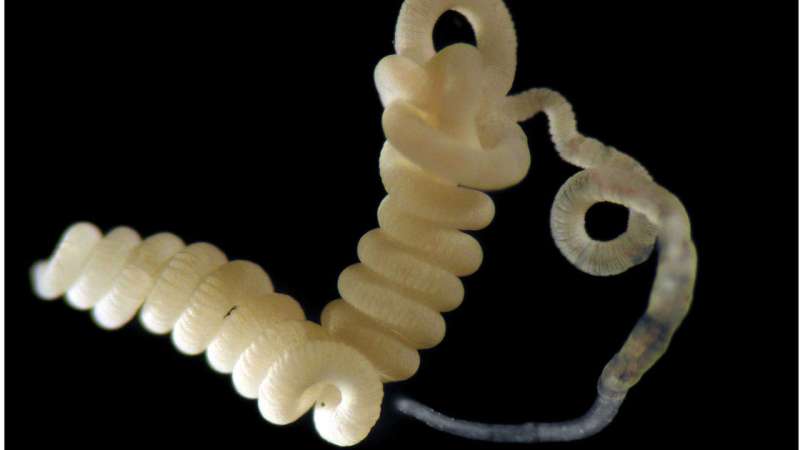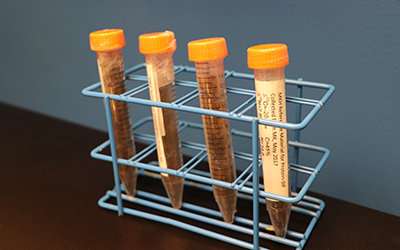Researchers devise new way to discern what microbes eat

A new technique devised by researchers from North Carolina State University and the University of Calgary provides a more in-depth look at the metabolism and physiology within microbial communities—the microscopic life such as bacteria, viruses and other tiny forms of life within our bodies and throughout nature. Specifically, the new technique provides a more direct way to determine what food source, or substrate, a certain microbe has consumed.
The researchers use a mass spectrometer to measure with very high accuracy the mass of molecules derived from the microbes in a community. Then they use a newly developed software program that allows them to link microbes with their substrates.
The basis for connecting microbe and substrate are so-called carbon stable isotope ratios—the ratios between naturally occurring forms of carbon with different masses. Nature contains both carbon-12, the most abundant form, and carbon-13, which has one more neutron than carbon-12. Each material has a very specific ratio of these two isotopes, which essentially can be used as the fingerprint or signature of the material. The new algorithm links the carbon isotope ratios of the substrates that are available to microbes in a given environment to the ratios found in the microbes themselves.
Manuel Kleiner, an NC State assistant professor in the Department of Plant and Microbial Biology and corresponding author of a paper that reports the research, says that understanding microbial communities is necessary to better comprehend animal and plant health and disease, as well as important environmental processes such as decomposition of organic matter and nutrient cycling in soils and oceans.

"Our method is based on the concept that you are what you eat," Kleiner said. "If there is a food source with a specific isotopic signature and we find a microbe with that same specific isotopic signature, we can make the connection between the two. A similar technique is actually used by archeological anthropologists, who can determine the type of diet a person ate by analyzing isotope ratios from hair or bone fragments."
Human hair is crucial for the technique to work. Kleiner surprised his hairdresser by bagging his hair after a haircut.
"We have to correct for a certain error occurring during mass spectrometry by using a calibration standard. As it turns out, human hair is an excellent material to calibrate our instrument," Kleiner said.
To test the new algorithm, the researchers took 20 pure culture samples and showed that the software provided measurements consistent with mass spectrometry standards. The researchers also put together complex samples with different microorganisms and tested for individual signatures from different species within the complex community. Finally, the researchers studied a gutless marine worm that hosts a number of bacteria and used the software to test the metabolism of this symbiotic relationship.
Kleiner added that all the data from the study is publicly available, so other researchers can test and utilize the new software.
More information: Manuel Kleiner et al, Metaproteomics method to determine carbon sources and assimilation pathways of species in microbial communities, Proceedings of the National Academy of Sciences (2018). DOI: 10.1073/pnas.1722325115
Journal information: Proceedings of the National Academy of Sciences
Provided by North Carolina State University




















